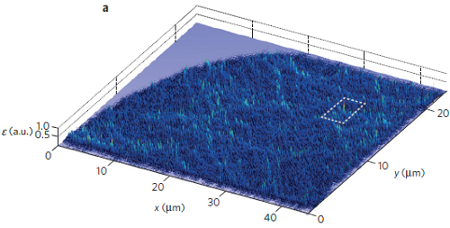Digital wellbeing should be a public health priority for the Arab region
21 October 2025
Published online 31 March 2015
An optical chip that emulates control over extreme weather events could improve prediction and reduce telecommunication network interruption.

The research, led by King Abdullah University of Science and Technology (KAUST) in Saudi Arabia, also has applications in energy harvesting, spectrometry and the fine-tuning of telecommunication networks.
“My research group takes inspiration from complex natural phenomena, and uses their unique properties to create new photonic technologies,” explains Andrea Fratalocchi at KAUST, who led the study with colleagues from the Netherlands and the UK. Fratalocchi said the work has shed light on how extreme events occur and led to a new approach that precisely predicts statistical likelihood.
The team were particularly interested in the dynamics of rogue waves, which appear apparently randomly in many different systems. To generate similar events at the nanoscale, the researchers created an optical chip of just 40 micrometres, of a quarter-stadium shape that helps generate random waves (pictured).
“I got the idea from a specific branch of mathematics which deals with ‘chaotic billiards’,” explains Fratalocchi. “If you launch a classical particle inside these systems, you observe a totally unpredictable trajectory. When light propagates into these systems, we observe a multitude of waves that evolve completely randomly, generating what we called a ‘photonic sea’.”
The team used a micro-scale optical channel to guide photons into the optical chip and create the photonic sea. Then, by letting a small number of waves flow, they were able to control the formation of isolated ‘rogue wave’ light structures of extremely large amplitude.
The research has implications for data communication networks, in which rogue waves can often create disturbances. “These effects are quite common in fiber links and wireless communications,” explains Fratalocchi. “One of our key findings is that rogue waves occur in a window where the losses of the system are optimum; not too high and not too low. In a communication link, we could add a suitable loss mechanism, such as an absorber, which would increase the losses to the point where these rogue wave events disappear.”
The researchers hope their chips could be used to develop new types of cryptographic system, which could lead to a hastening of communication speeds with total security.
doi:10.1038/nmiddleeast.2015.62
Stay connected: